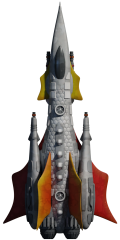


It had to replace the F-4 Phantom in Navy’s service and become a carrier-borne air defense and strike platform. One of the ideas behind its development was to produce an ultimate multirole aircraft that could fill almost every role the US military could find. General Dynamics F-111 Aardvark was a moderately successful swing-wing American strike aircraft from the 60s. Honorable mention: General Dynamics-Grumman F-111B The order of this list is somewhat arbitrary, yet the main criteria are the ambition of the development, as well as its uniqueness.

So, let’s look at some of the coolest, most interesting, most promising fighter jet failures that ever existed. Many failed projects were incredibly ambitious, interesting and could have succeeded if, for example, the laws of physics had been a bit gentler, or somebody would have discovered an endless source of money to cover their bloated development. To be considered a failure, the jet has to fail because of its intrinsic properties – something with its concept or execution has to go spectacularly wrong.īut being a failure does not mean being bad at everything. Those are not failures – they are results of changing circumstances. For example, fifth-generation jets were supposed to replace the fourth-generation ones, but became more of a supplement than a replacement due to their high cost. It is also quite common for jets to get their production numbers cut, or be assigned to a different role than initially envisioned. If not for the collapse, they probably would have been built and go on to become successful.

For example, many late Soviet projects did not see mass production due to budgetary reasons after the collapse of the Soviet Union: the supersonic VTOL Yak-41 and Mikoyan’s fifth-generation attempt, the 1.44, among them. Of course, many potentially successful jets do not enter production because of economic, political, or other non-aviation-related reasons. It has to shoot for the stars and end up in a dumpster it has to be the most promising thing around, yet underperform spectacularly. Thus, it is only natural that the most unsuccessful fighter jets are the ones that never left the drawing board or went beyond the prototype stage.īut to experience the ultimate opposite of success – a failure – the jet has to do something extraordinary too. But to demonstrate success in those areas, a jet has to be accepted into service first. The success of a fighter jet can be measured by many things – its performance, its sales, its combat effectiveness, to name a few.


 0 kommentar(er)
0 kommentar(er)
